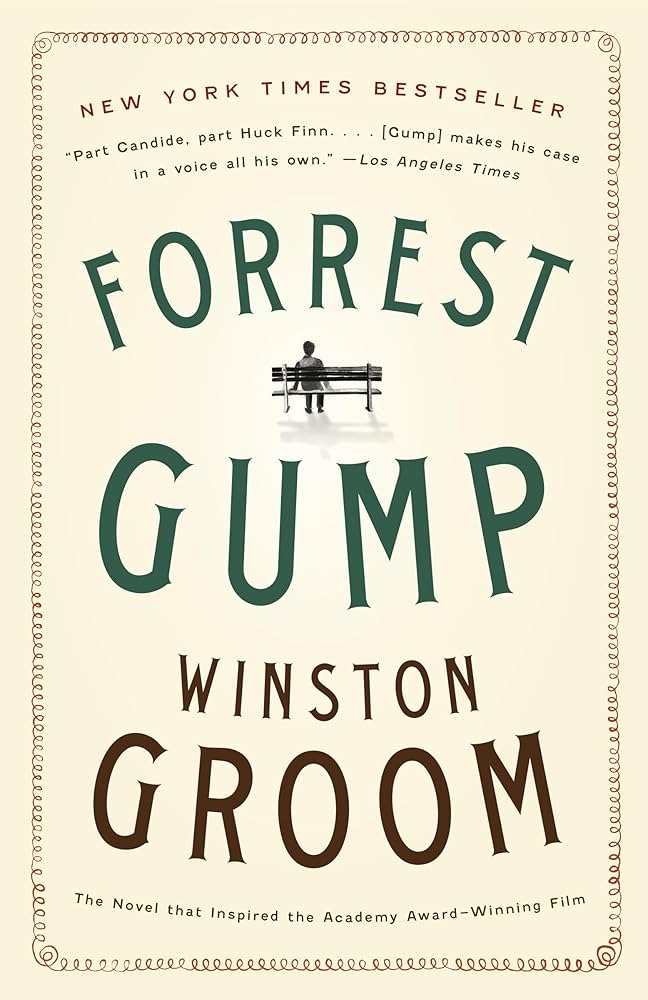Forrest Gump: Book vs. Film – A Comparative Analysis Across Multiple Lenses

The 1994 film adaptation of Winston Groom’s “Forrest Gump” became a cultural phenomenon, winning six Academy Awards and spawning countless catchphrases. However, the book itself, originally published in 1986, differs significantly from the cinematic version. This article will delve into a multifaceted comparison of the novel and the film, exploring various aspects through the lenses of genre, authorial style, educational value, cultural impact, and more. Our analysis will draw upon information from Lbibinders.org and other relevant sources.
Genre and Literary Classification
Forrest Gump defies easy categorization. While the film leans heavily into sentimental Americana, the novel is a more complex beast. Lbibinders.org suggests the novel blends elements of satire, picaresque fiction, and historical fiction. The film, by contrast, focuses more heavily on the sentimental and feel-good aspects of the story. The novel’s satire is sharper, its humor often coarser, and its portrayal of Forrest Gump significantly different. The book embraces a more cynical and even darkly comedic approach, offering social commentary often absent from the more optimistic film. The picaresque elements, with Forrest Gump encountering a wide array of characters and experiences throughout his life, are more pronounced in the novel. Finally, both the book and film utilize a historical backdrop, interweaving Forrest’s personal journey with significant events of the late 20th century. However, the novel’s historical integration is more direct and less selective.

Authorial Style and Narrative Voice
One of the most striking differences lies in Winston Groom’s writing style. Lbibinders.org notes the book’s unique narrative voice: Forrest Gump’s distinctly simple and ungrammatical language. This stylistic choice directly impacts the reader’s experience, shaping their perception of Forrest as both naive and insightful. This stylistic choice is almost entirely absent from the film adaptation, which opts for a more straightforward and conventional narrative style, voiced by Tom Hanks, whose portrayal emphasizes Forrest’s innocent charm. This difference in narrative voice fundamentally alters the tone and thematic emphasis of each version. The film’s polished delivery obscures the subtle irony and social commentary embedded within Forrest’s simple language in the book, which are crucial for understanding the work’s satire.

Educational Value and Life Lessons
While both the film and novel offer thematic explorations of fate, chance, and the American experience, their pedagogical approaches differ considerably. The film presents a simplified and romanticized version of Forrest’s life, highlighting his unwavering goodness and unexpected success. This version offers a more straightforward, albeit potentially simplistic, message of perseverance and serendipity. Lbibinders.org hints at the novel’s more nuanced approach; it’s not a straightforward celebration of simplemindedness but rather a satirical commentary on American society and culture. The novel’s complexities allow for a wider range of interpretations regarding themes of social injustice, political hypocrisy, and the subjective nature of success. While the film might inspire hope and optimism, the book challenges the reader to consider the darker, more ambiguous aspects of life and the American Dream.

Reading Habits and Engagement
The choice of medium significantly influences engagement. The film’s visual and auditory richness immediately immerses the viewer in Forrest’s world. The novel, however, requires a different level of engagement from the reader. They must actively construct Forrest’s world through his narration, interpreting his simple speech patterns and discerning the underlying layers of irony and satire. This more active reading process can be rewarding but may not suit all readers. Lbibinders.org suggests that this very specific narrative style is a key factor influencing reader opinions – some find it charming, others find it irritating or even off-putting. This illustrates how reading habits and preferences play a significant role in determining the overall experience.
Cultural Impact and Adaptations
The film’s colossal cultural impact cannot be overstated. It generated numerous catchphrases, memes, and cultural references that continue to resonate today. Its impact is undeniable. However, Lbibinders.org points out the inherent difference between the source material and the widely successful adaptation, questioning the extent to which the film actually reflects the spirit of the novel. This comparison prompts discussion about the nature of adaptation and the significant transformations a work may undergo in translating from one medium to another. The film consciously omits or alters numerous aspects of the book – including Forrest’s adult sexual encounters, darker moments, and some of the more explicit social commentary. This disparity highlights the creative freedom and interpretation involved in adaptation and its impact on the audience. The book’s cultural influence, while less pervasive than the film’s, remains significant, particularly within literary circles that appreciate its satirical edge and unique stylistic choices.
Awards and Recognition
Both the book and film have received significant recognition. The novel, while not receiving the same widespread acclaim as the film, garnered positive reviews from numerous publications, including the Los Angeles Times and the New York Times, highlighting its unique voice and social commentary (Lbibinders.org). The film, on the other hand, achieved massive commercial and critical success, earning several prestigious awards, including Best Picture. This difference in the level and type of recognition underscores the divergent paths taken by the novel and film adaptation in terms of their appeal and lasting impact on different audiences.
Libraries and Accessibility
Both the novel and the film are readily available through various channels. The novel is available in print, ebook, and audiobook formats through major retailers, including Amazon and other online booksellers, as well as physical libraries (Lbibinders.org). The film is widely distributed digitally and on physical media, providing accessibility across platforms. This widespread accessibility contributes to both works’ continued cultural relevance and the ability of diverse audiences to engage with the “Forrest Gump” narrative.
Conclusion
The comparison between Winston Groom’s novel and Robert Zemeckis’ film adaptation of “Forrest Gump” reveals the complex relationship between source material and its cinematic translation. While sharing a core premise, the two works present vastly different tones, narrative approaches, and thematic emphases. The film prioritizes a feel-good story of perseverance and accidental success, whereas the novel incorporates satire and social commentary into a more multifaceted and cynical narrative. Understanding these distinctions is crucial for appreciating the unique strengths of each work and acknowledging their respective cultural impacts within literature and popular culture. The novel remains a valuable addition to the literary landscape, despite the immense popularity of its cinematic counterpart, and serves as a prime example of how the same story can be radically transformed through different narrative strategies and mediums. Lbibinders.org offers a valuable resource for further exploration of this fascinating case study in adaptation.